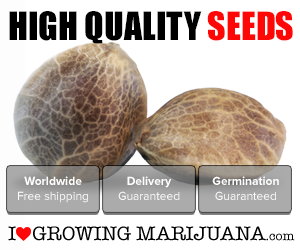As the cannabis industry continues to emerge, brand differentiation is critical for new and existing operators.
And this year, the cannabis industry saw differentiation in products and how they are marketed, as well as a focus on consumer education.
Cannabis Business Times spoke with Laurie Parfitt, CEO of LKP Impact Consulting, a fractional CMO firm, to discuss the top cannabis marketing trends that emerged in 2022 and the opportunities they provide businesses.
1. Increased emphasis on product differentiation.
Parfitt says the industry is starting to see companies focus on how they can differentiate themselves in the edibles space by creating different forms of delivery methods.
“So instead of just doing the traditional gummy, now they’re looking at other methods of delivery that are still discrete and along the lines of an edible, but really create a differentiating point for them in the marketplace,” she says.
For example, while chewables have become a classic form of edibles within the industry, companies are starting to segue into other delivery methods, such as cooking and baking oils, savory snacks, beverages, mints and hard candies, sublinguals (listerine strips) and more.
Specifically, cannabis-infused beverages exploded in popularity this year, and the market is poised for growth, Parfitt says.
According to a Cannabis Beverages Global Market report, the U.S. cannabis beverage market is anticipated to reach $2.7 billion by 2027.
“When we think about beverages, if you look at growth and investment, it’s really a rising star,” Parfitt says. “It’s a high investment, high growth area. … We’ve seen a proliferation of beverages across the country, and we’re starting to see it as a major consumption method going forward.”
The market share of beverages has increased by nearly 40% in the U.S. and Canada since January 2021, according to a report released Nov. 18 from cannabis data company Headset, titled “Cannabis Beverages: Examining category performance & trends.” Over the same period, the Canadian cannabis beverage market saw a 300% increase in brands, while the U.S. saw a 65% increase in brands.“At the end of the day, if you want to be truly successful going forward and really give consumers a reason to buy your product, you have to have a true product differentiation, otherwise it all becomes commoditized,” she says.
2. Increased focus on microdosing.
“We’re starting to see an interest in microdosing and lower dose options,” Parfitt says. “It used to all be about high THC, … but the highest THC might not be effective for you.”
For example, Parfit referred to the 1906 edibles brand, which focuses on low-dose, fast-acting THC and CBD edible products. The company mainly uses a 1:1 ratio for its products (2.5 mg of THC and 2.5 mg of CBD).
“Microdosing allows the consumer to enter the cannabis space gradually,” she says. “You could take four pills and get 10 milligrams [of THC], … or two and a half [milligrams of THC] might be enough for you.”
Moreover, the Headset report found that high-dose products (25mg – 1000mg of THC) account for over 33% of all U.S. beverage sales for the first ten months of 22, while 100mg packages made up 22% of total sales and low dose options (less than 6mg of THC) also made up over 22%.
3. Companies utilizing occasion-based marketing.
“The other thing we saw more of in 2022 is occasion-based marketing, and I think we’re going to see more of it than 2023,” Parfitt says.
Occasion-based marketing is when a business uses occasions, events, or holidays to market its brand to its target audience, according to Voxco. Parfitt referred to Miss Grass, a THC and CBD flower company, which uses occasion-based marketing to target consumers.
For example, the company markets its Miss Grass pre-roll series based on moods and events. The orange Miss Grass is marketed as “fast times,” best for “bloom and play,” while the blue Miss Grass marketed as “quiet times,” best “anchor and restore.” The series consists of two additional products.
“Consumers in general, when they’re coming into the industry, [typically] don’t know when they should use cannabis, why they should use cannabis, and how they should use cannabis,” she says. “Telling consumers when, how, and why they should use products is incredibly important for them. It’s taking them through that consumer path to purchase.
“A lot of consumers will go up to a budtender and say, ‘I want an edible for XYZ, or I want a beverage.’ What the budtender needs to do, is they need to step back, and they should say, ‘Okay, that’s awesome. So, tell me, what brings you in? What are you trying to solve?’”
4. Educating consumers on terpenes and how they work.
Marketers started to capitalize on terpenes more in 2022, focusing on what they are and how they work, Parfitt says.
“Indica. Sativa. Hybrid. Those really gave people a framework for how they should buy cannabis,” Parfitt says. “‘So, if I want to feel happy, I’m going to go sativa. If I want to relax, I’m going to go indica. If I want something in between, I’m going to go hybrid.’”
“Now we’re starting to see what are the key terpenes that work for you in your system? … Even in 2019, I started to see people start talking about it, but in 2022, I actually started to see brands really interact with it and say, ‘It’s not about indica or hybrid; it’s about how those terpene profiles interact with your endocannabinoid system.’”
Parfitt referenced premium vape company Nuvata, as the brand includes the terpene profiles in each product on the product packaging, with a word to describe how it makes an individual feel.
“We’re going to see terpenes really proliferate in 2023,” she says.
Parfitt says she anticipates these trends, as well as several other, to continue to emerge in 2023.
This is part one of a two-part series. CBT spoke with Parfitt to see what cannabis marketing trends she anticipates will light up in 2023.
Read the full article here









